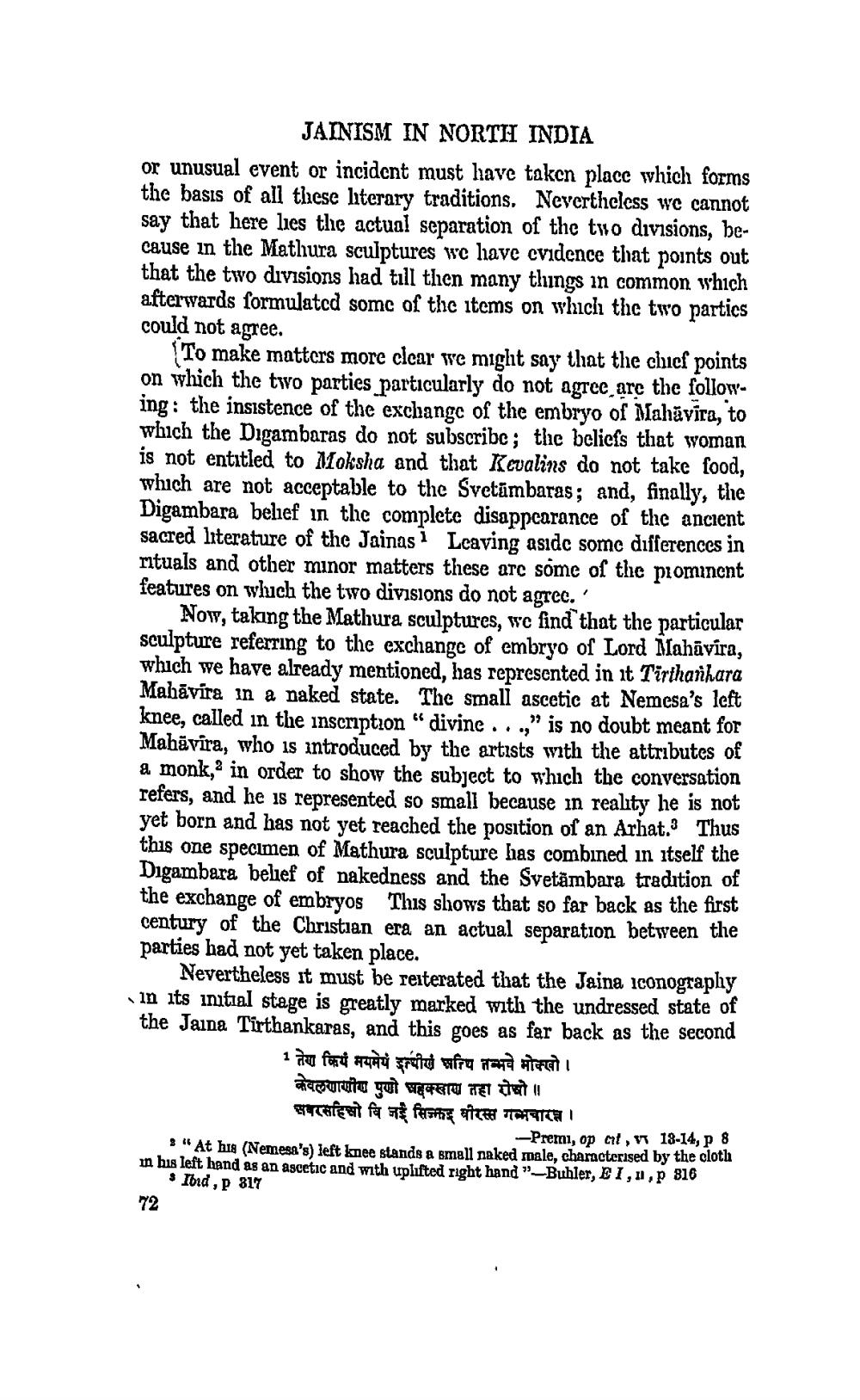________________ JAINISM IN NORTH INDIA or unusual event or incident must have taken place which forms the basis of all these hiterary traditions. Nevertheless we cannot say that here lies the actual separation of the two divisions, because in the Mathura sculptures we have cvidence that points out that the two divisions had till then many things in common which afterwards formulated some of the items on which the two partics could not agree. To make matters more clear tre might say that the chucf points on which the two parties particularly do not agree are the following: the insistence of the exchange of the embryo of Mahavira, to which the Digambaras do not subscribe; the beliefs that woman is not entitled to Moksha and that Kevalins do not take food, which are not acceptable to the Svetambaras; and, finally, the Digambara belief in the complete disappearance of the ancient sacred literature of the Jainas1 Lcaving aside some differences in mtuals and other minor matters these are some of the prominent features on which the two divisions do not agrec.' Now, taking the Mathura sculptures, we find that the particular sculpture referring to the exchange of embryo of Lord Mahavira, which we have already mentioned, has represented in it Tirthanhara Mahavira in a naked state. The small ascetic at Nemesa's left knee, called in the inscription "divine ...," is no doubt meant for Mahavira, who is introduced by the artists with the attributes of a monk, in order to show the subject to which the conversation refers, and he is represented so small because in reality he is not yet born and has not yet reached the position of an Arhat. Thus this one specimen of Mathura sculpture has combined in itself the Digambara belief of nakedness and the Svetambara tradition of the exchange of embryos This shows that so far back as the first century of the Christian era an actual separation between the parties had not yet taken place. Nevertheless it must be reiterated that the Jaina iconography in its initial stage is greatly marked with the undressed state of the Jaina Tirthankaras, and this goes as far back as the second 1 तेण क्रियं मयमय इत्पीण अरिय तम्भवे मोक्खो। केवलणासीय पुणो प्रहक्खाप तहा रोषो / सबरसहिलो वि जई सिमद वीरस्स गम्भचारत / -Prerm, op cit, n 13-14, p 8 3 "At his (Nemesa's) left knee stands a small naked male, characterised by the cloth in his left hand as an ascetic and with uplifted right hand "-Buhler, E1,1, p 816 Ibid, P 817 72




